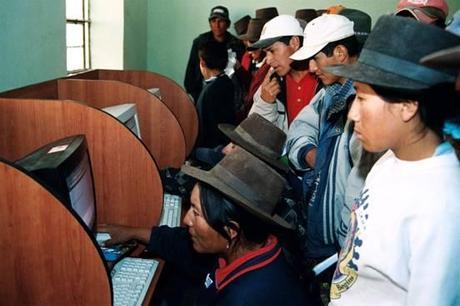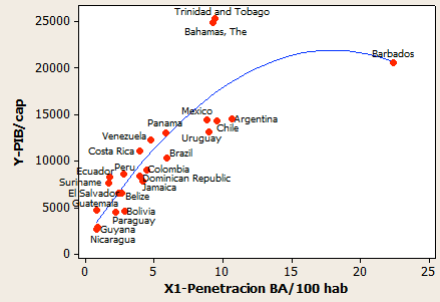
By Gustavo Guerrero
While broadband internet has become an essential business tool, it has been slow to arrive in the areas that need the benefits of development the most – namely rural regions of developing countries. Though there has been some growth over the years, there is still a long way to go. Recognizing this, the Inter-American Development Bank (IDB) released a report showing the effect of broadband internet on the economies of Latin American and Caribbean countries, outlining how countries can improve their telecommunications infrastructure.
Nationwide high-speed internet access is something that many in the developed world take for granted. However, in the developing world there is a different story. In Nigeria, low broadband penetration has been cited as hindering the development of e-commerce in Africa’s largest economy. Similar examples are present all across the developing world. The potential for growth is there, waiting, but it cannot be realized until broadband penetration and speed are improved.
Having a web presence is now almost a prerequisite for becoming a successful business. The specific type of web presence can range from simply listing basic business contact information and operating hours, to having an online sales portal. Being online offers many benefits with very few, if any drawbacks. While most businesses in the developed world have adapted to this new environment, businesses in many parts of the world lack basic internet access that would allow them to grow and thrive.
The report, Socioeconomic Impact of Broadband in Latin American and Caribbean Countries, consists of two major components which aim to promote broadband internet connection in the region. The first is an econometric model for LAC countries which helps determine how increases to broadband penetration could affect their GDP. The second is a set of recommendations designed to help governments best improve their infrastructure.
The IDB studied 26 LAC countries from 2003 to 2006 and found that “a 10 percent increase in broadband penetration brought about an average increase of 3.19 percent in per capita GDP.” The chart below demonstrates this on a country-by-country basis, showing that the increase is much greater in poorer countries than richer countries, since massive growth will naturally taper off as broadband internet levels approach saturation levels. Richer countries are already at or near this saturation level, where poorer countries are usually nowhere close. According to the report, the countries represented should roughly follow the curve as they gain more and more broadband penetration.

Correlation between increase in penetration and GDP/capita, IDB Report No. IDB-TN-471
The data gathered from the LAC region could not entirely untangle broadband penetration from other economic trends, so to corroborate the data, the IDB referenced a report which surveyed 33 OECD countries and isolated the effect of broadband speed. These results showed that doubling broadband speed increased the GDP by 0.3 percent. The report also shows a positive impact on productivity and employment via increased broadband rates.
The second major component of the IDB report examined what LAC governments could do to increase broadband penetration and came up with a set of conclusions about the policy options available to them. The IDB stressed regulation and capacity building, with a focus on the development of different sectors. In the chart below, these sectors are detailed and explained, separated into four separate sections.

Approaches to improve broadband penetration, IDB Report No. IDB-TN-471
The overall message of the report is straightforward: internet connectivity and development of any sort go hand-in hand. More money flowing into an area for development leads to internet access, and internet access in turn boosts revenue, fueling the local economy and leading to even greater speeds. The IDB also has a tool available which allows you to compare myriad statistics, most relevantly broadband penetration and internet penetration as a whole, but which also shows statistics for things such as education and infrastructure development.
This tool can be used to easily and quickly identify existing infrastructure, levels of wealth, education, and more in different regions of a country. A local, regional, or national government could use a site like this to identify which regions should be targets for aid and request targeted aid. By investing in an area, broadband penetration will eventually rise, and from that other sectors of the economy in the region will follow suit.
There is massive room for growth due to the low amounts of penetration across LAC countries. For example, Ecuador’s capital, Quito, has over 10 percent broadband penetration, but the rural areas of the country struggle to exceed 2 percent penetration. Similar patterns appear all over developing Latin American countries, where (with a few exceptions) the capital regions are the only areas with anywhere close to decent broadband penetration and internet access.
As broadband penetration increases, GDP per capita generally follows, leading to more investment in the area and development as the economy has the potential to expand. With the internet, entrepreneurs will have many more avenues of growth they would not have otherwise, laying a bright path for the future of Latin America.
Gustavo Guerrero is an intern for Latin America & the Caribbean at CIPE.

